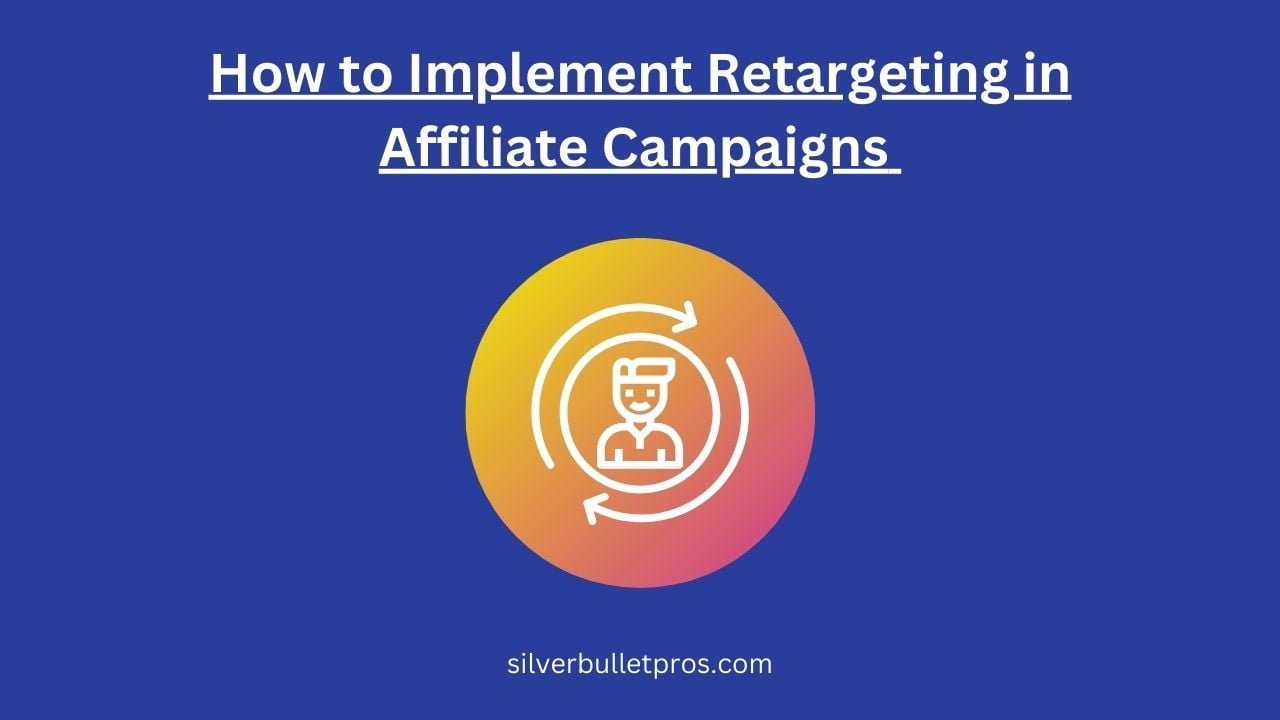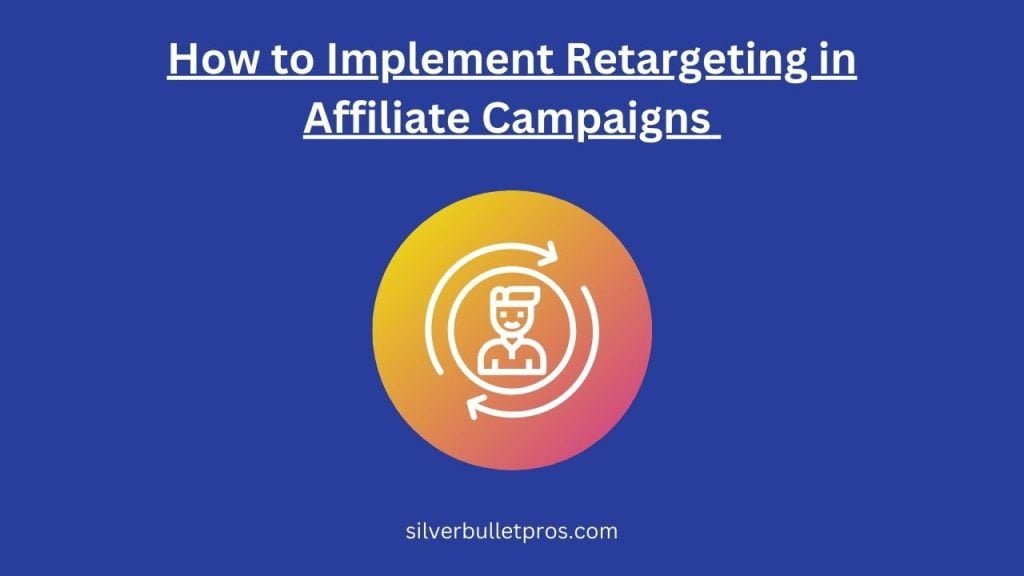

Retargeting is a powerful digital marketing strategy that allows advertisers to reach out to potential customers who have previously interacted with their website or products. It works by placing cookies or tracking pixels on users' browsers, which then trigger ads to be displayed to them as they browse the internet. These ads serve as gentle reminders to encourage users to revisit the advertiser's website and complete a desired action, such as making a purchase or signing up for a newsletter.
To break it down further, imagine you visit an online store to look at a pair of shoes but leave without making a purchase. Later, as you browse other websites or social media platforms, you start seeing ads for the same pair of shoes you were interested in. That's retargeting in action!
How to Set Up Retargeting Campaigns
Setting up retargeting campaigns involves a few key steps:
- Choose a Retargeting Platform: Select a retargeting platform that aligns with your budget, goals, and target audience. Popular options include Google Ads, Facebook Ads, and AdRoll.
- Install Tracking Pixels: Install tracking pixels or cookies on your website to track user behavior, such as page views, products viewed, or items added to the shopping cart.
- Create Audience Segments: Segment your audience based on their behavior, interests, or demographics. This allows you to tailor your retargeting ads for maximum relevance.
- Design Compelling Ads: Create eye-catching and compelling ad creatives that resonate with your audience and entice them to take action. Use attention-grabbing visuals, persuasive copy, and clear calls-to-action (CTAs).
- Set Bid Strategy and Budget: Determine your bid strategy and budget for your retargeting campaigns. Monitor your campaigns closely and adjust your bids and budget as needed to maximize ROI.
How to Measure the Success of Retargeting Campaigns
Measuring the success of your retargeting campaigns is essential for optimizing performance and maximizing ROI. Here are some key metrics to track:
- Click-Through Rate (CTR): Measures the percentage of users who click on your retargeting ads. A higher CTR indicates that your ads are engaging and compelling.
- Conversion Rate: Tracks the percentage of users who complete a desired action, such as making a purchase or filling out a form, after clicking on your retargeting ads.
- Return on Ad Spend (ROAS): Calculates the revenue generated from your retargeting campaigns relative to the amount spent on advertising. A higher ROAS indicates a more profitable campaign.
- Frequency: Measures how often users are exposed to your retargeting ads. Too high a frequency can lead to ad fatigue, while too low a frequency may result in missed opportunities.
- Attribution: Determines which touchpoints or interactions contributed to conversions. This helps you understand the effectiveness of your retargeting efforts across different channels.
Tips for Effective Retargeting
- Segment Your Audience: Divide your audience into distinct segments based on their behavior, interests, or demographics. This allows you to deliver highly targeted and personalized retargeting ads.
- Use Dynamic Ads: Dynamic retargeting ads automatically generate personalized content based on users' past interactions with your website or products. This increases relevance and engagement.
- Optimize Ad Frequency: Strike a balance between frequency and relevance to avoid ad fatigue. Experiment with different frequency caps to find the sweet spot for your audience.
- Test Different Ad Creatives: A/B test different ad creatives, headlines, and CTAs to identify what resonates best with your audience. Continuously optimize your ads based on performance data.
- Combine Retargeting with Other Strategies: Integrate retargeting with other digital marketing strategies, such as email marketing, social media advertising, and content marketing, for a cohesive and multi-channel approach.
Now that we've covered the basics of retargeting, let's dive deeper into how it can benefit affiliate campaigns and explore some advanced strategies for implementation.
Why is Retargeting Important for Affiliate Campaigns?
Retargeting plays a crucial role in affiliate marketing by allowing affiliates to re-engage with potential customers who have shown interest in their promoted products or services. By targeting users who have already interacted with your affiliate links or landing pages, you can increase brand awareness, drive repeat visits, and ultimately boost conversions.
One of the main advantages of retargeting in affiliate campaigns is its ability to target users at different stages of the sales funnel. Whether they've abandoned their shopping cart, browsed product pages, or expressed interest but haven't yet made a purchase, retargeting enables affiliates to deliver personalized messages and offers tailored to each user's behavior and intent.
Moreover, retargeting helps affiliates stay top-of-mind with their audience, especially in highly competitive niches where multiple affiliates may be promoting similar products or services. By maintaining a consistent presence across multiple touchpoints, affiliates can reinforce their value proposition and increase the likelihood of conversion.
How to Target the Right Audience
Targeting the right audience is crucial for the success of your retargeting campaigns. Here are some tips to help you effectively target your audience:
- Segmentation: Segment your audience based on their behavior, demographics, interests, and past interactions with your affiliate links or landing pages. This allows you to deliver highly relevant and personalized retargeting ads.
- Custom Audiences: Use custom audience lists to target specific groups of users, such as website visitors, email subscribers, or past customers. Leverage data from your affiliate platform or CRM system to create custom audiences tailored to your campaign objectives.
- Lookalike Audiences: Expand your reach by targeting lookalike audiences who share similar characteristics and behaviors with your existing audience segments. Platforms like Facebook and Google Ads offer lookalike audience targeting options based on your custom audience lists.
- Exclude Irrelevant Audiences: Exclude irrelevant audiences or segments that are unlikely to convert, such as existing customers or users who have already completed the desired action. Focus your retargeting efforts on high-value prospects with the greatest potential for conversion.
How to Create Effective Retargeting Ads
Creating effective retargeting ads is essential for capturing users' attention and driving them to take action. Here are some best practices for creating compelling retargeting ads:
- Eye-Catching Visuals: Use high-quality images or videos that grab users' attention and showcase your products or services in the best possible light. Choose visuals that align with your brand identity and resonate with your target audience.
- Compelling Copy: Write persuasive ad copy that highlights the benefits of your products or services and encourages users to take the next step. Use clear and concise language, compelling headlines, and persuasive calls-to-action (CTAs) to drive action.
- Personalization: Personalize your retargeting ads based on users' past interactions, preferences, or purchase history. Incorporate dynamic content or personalized recommendations to make your ads more relevant and engaging.
- Mobile Optimization: Ensure that your retargeting ads are optimized for mobile devices, as a significant portion of internet traffic comes from smartphones and tablets. Use responsive design and mobile-friendly formats to deliver a seamless experience across devices.
- A/B Testing: Test different ad creatives, headlines, CTAs, and offers to identify what resonates best with your audience. Continuously optimize your ads based on performance
What is retargeting and how does it work in affiliate marketing?
Retargeting involves showing ads to people who have previously visited your affiliate website or landing page but didn't convert. It works by placing a pixel on your site that cookies visitors, allowing you to then show them targeted ads on other websites.
How can retargeting increase conversions for affiliate campaigns?
Retargeting keeps your affiliate offers top-of-mind and allows you to re-engage potential customers who showed interest but didn't convert initially. This warm audience is more likely to convert than a completely cold audience.
What are the best platforms and ad networks for retargeting in affiliate marketing?
Popular retargeting platforms include Google Ads Remarketing, Facebook Ads Retargeting, and ad networks like AdRoll and Perfect Audience that specialize in retargeting across many websites.
How do I set up retargeting pixels and audiences for my affiliate offers?
You'll need to place a retargeting pixel on your affiliate landing pages and capture visitor data. Then, create retargeting audiences or lists in your ad platform based on specific visitor behaviors like pages visited.
What are some effective retargeting ad strategies and creatives for affiliate campaigns?
Effective strategies include offering discounts/incentives, creating audience-specific ads and creatives, and setting up sequential retargeting to show different ads based on visitor behavior. Dynamic product ads can also work well.